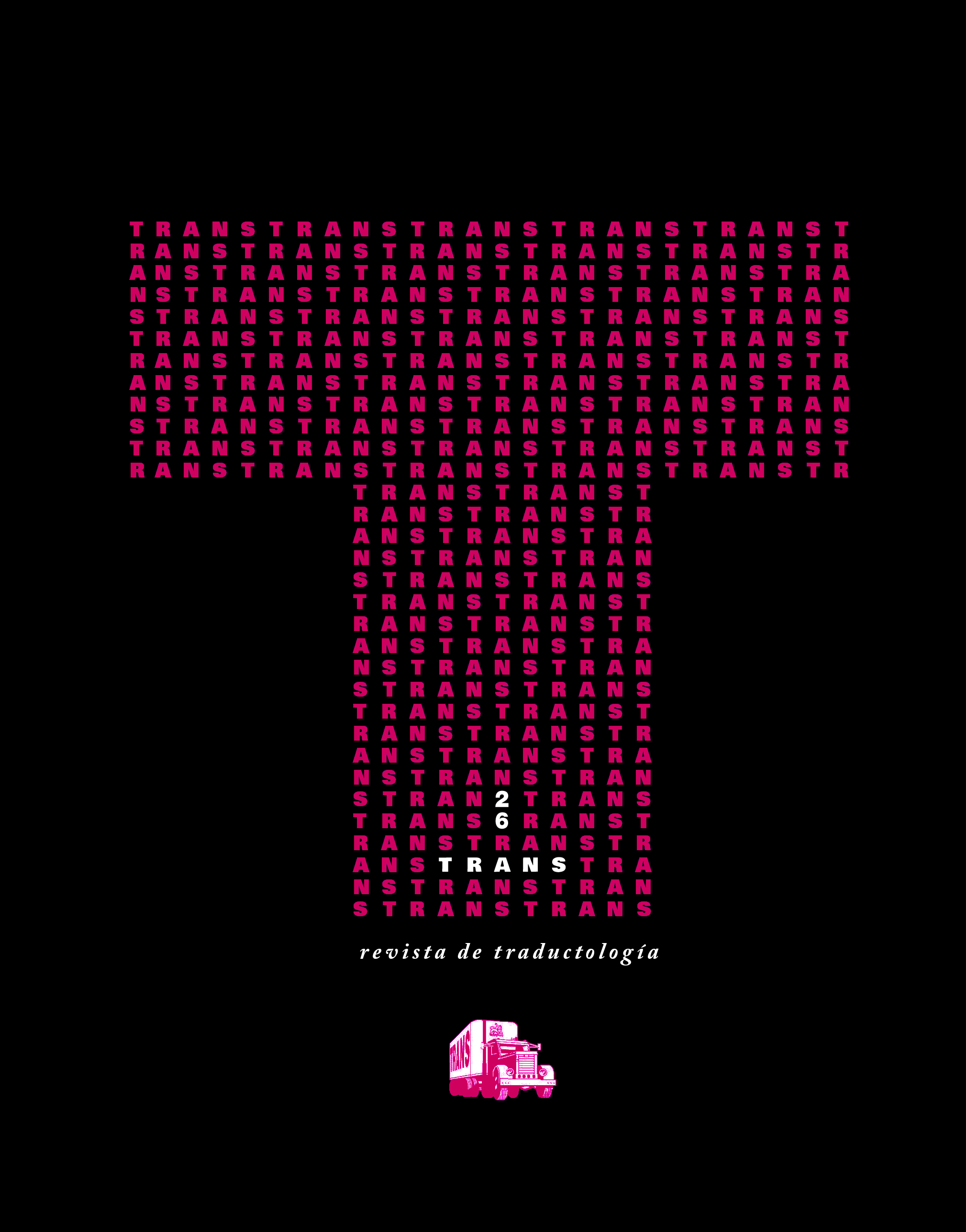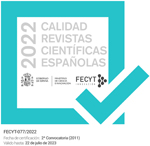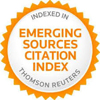Formación de profesionales de la traducción con arreglo a las demandas del mercado
DOI:
https://doi.org/10.24310/TRANS.2022.v26i1.14221Keywords:
translation curricula, translator training, market needs, translation teaching and assessmentAbstract
This study is designed to evaluate the two academic translation training master’s programs at two local public universities in Palestine in view of burgeoning market demands. The study reveals the weaknesses and strengths in both training programs, a step which is believed to be necessary to evaluate trainers’ current practices and provide formative data about these programs and programs operating in similar contexts. To achieve this objective, the modules of the courses, the teaching and assessment methods and the challenges facing implementing and developing the curricula are all studied, bearing in mind the job market. Two questionnaires were also administered to students and translation professionals. The questionnaires address the current market demands for translator training, the performance level of novice translators, the nature of the courses and the challenges that are likely to face developing and implementing the curricula, and the methods of teaching and assessment. The study findings reveal that there are significant shortcomings in the curricula, namely the theoretical training is overemphasized and stakeholders’ involvement in the review and design of the translation program curricula remains significantly undervalued. Finally, the study identifies the emerging translation text genres that occupy a significant niche in the local translation market.
Downloads
Metrics
Publication Facts
Reviewer profiles N/A
Author statements
Indexed in
-
—
- Academic society
- N/A
- Publisher
- Universidad de Málaga
References
Al-Batineh, M., and Bilali, L. (2017). Translator Training in the Arab world: Are curricula aligned with the language industry? The Interpreter and Translator Training, 11(2-3), 187-203.
Amer, W. (2010). Teaching translation at Gaza universities: Problems and solutions. Refereed papers of the First National Conference: Improving TEFL Methods and Practices at Palestinian Universities. Al Quds Open University.
Atawneh, A. and Alaqra, M. (2007). An appraisal of the teaching of translation in Palestinian universities. Paper presented at The Role of Translation in Dialogue of Civilizations Conference. An-Najah National University.
Attari, O. (2012). Impediment to translator training at Arab universities: Proposal for change. Arab World English Journal, 3, 103-127. http://www.awej.org/?section=2
Bahloul, M. (2021). Training translators: A case for Arabic orthographic reforms. In S. M. Shiyab (Ed.). Research into translation and training in Arab academic institutions (pp. 58-88). Routledge.
Dam, H., and Zethsen, K.K. (2010). Translator status: Helpers and opponents in the ongoing battle of an emerging profession. Target 22(2), 194-211.
Farghal, M. (2000). The training of student translators. Turjuman 9(1), 39-40.
Gabr, M, (2001a). Program evaluation: A missing critical link in translator training. Translation Journal 5(1). http://translationjournal.net/journal/15training.htm
Gabr, M. (2001b). Toward a Model Approach to Translation Curriculum Development. Translation Journal 5(2). http://translationjournal.net/journal/16edu.htm
Gillespie, M. (2012). Market for outsourced translation and interpreting services and technology to surpass US$33.5 Billion in 2012. https://www.commonsenseadvisory.com/Default.aspx?Contenttype=ArticleDet&tabID=64&moduleId=392&Aid= 2890&PR=PR
Hurtado Albir, A. (2007). Competence-based curriculum design for training translators. The Interpreter and Translator Trainer, 1(2), 163-195.
Ibis World (2015). Translation services in the US: Market research report. http://www.ibisworld.com/industry/default.aspx?indid= 1446
Kang, M. S., & Shunmugam, K. (2014). The translation profession in Malaysia: The translator’s status and self-perception. Gema Online Journal of Language Studies, 14(3). Retrieved from http://dx.doi.org/10.17576/GEMA-2014-1403-12
Krasny, J. (2014). Lost in translation? There’s a whole industry to help: The translation services sector is open (and hungry) for business. http://www.inc.com/jill-krasny/why-translation-services-is-a-top-industryto-start-a-business.html
Kenny, D. (2020). Technology in Translator Training. In M O’Hagan (Ed.). The Routledge handbook of translation technology (pp. 498-515). Routledge.
Lasnier, F. (2000). Réussir la formation par compétences. Guerin.
Mahasneh, A. (2015). Translation Training in the Jordanian Context: Curriculum Evaluation in Translator Education (PhD Thesis). Binghamton University: State University of New York.
Newmark, P. (1991). About Translation. Multilingual Matters.
Nilssen, D. (2014). Fast-growing industries ripe for entrepreneurs. http://www.entrep reneur.com/article/233490
Pym, A. (2005). Training translators: Ten recurrent naiveties. Translating Today 2, 3-6.
Sheal, P.R. (1989). How to develop and present staff training courses. Kogan Page.
Shehab, E., and Thawabteh, M. (2020). Undergraduate translation teaching: A pedagogical perspective. Onomázein 50, 124-148.
Thawabteh, M. (2009). Apropos translator training aggro: A case study of the Centre for Continuing Education. The Journal of Specialized Translation 12, 165-179.
Thawabteh, M., and Najar, O. (2014). Training legal translators and interpreters in Palestine. AWEJ 3, 41-52.
Thawabteh, M., and Shehab, E. (2017). Post-graduate translation curriculum and employability: The case of two Palestinian universities. Studies about Languages 30(1), 29-41.
Downloads
Published
How to Cite
Issue
Section
License
All contents published in TRANS. Revista de Traductología are protected under the Creative Commons Attribution-NonCommercial-ShareAlike 4.0 International (CC BY-NC-SA 4.0) license. All about this license is available in the following link: <http://creativecommons.org/licenses/by-nc-sa/4.0>
Users can copy, use, redistribute, share and exhibit publicly as long as:
- The original source and authorship of the material are cited (Journal, Publisher and URL of the work).
- It is not used for comercial purposes.
- The existence of the license and its especifications are mentioned.
- ShareAlike — If you remix, transform, or build upon the material, you must distribute your contributions under the same license as the original.
There are two sets of authors’ rights: moral and property rights. Moral rights are perpetual prerogatives, unrenounceable, not-transferable, unalienable, imprescriptible and inembargable. According to authors’ rights legislation, TRANS. Revista de Traductología recognizes and respects authors moral rights, as well as the ownership of property rights, which will be transferred to University of Malaga in open access.
The property rights are referred to the benefits that are gained by the use or the dissemination of works. TRANS. Revista de Traductología is published in an open access form and it is exclusively licenced by any means for doing or authorising distribution, dissemination, reproduction, , adaptation, translation or arrangement of works.
Authors are responsable for obtaining the necessary permission to use copyrighted images.













21.png)
